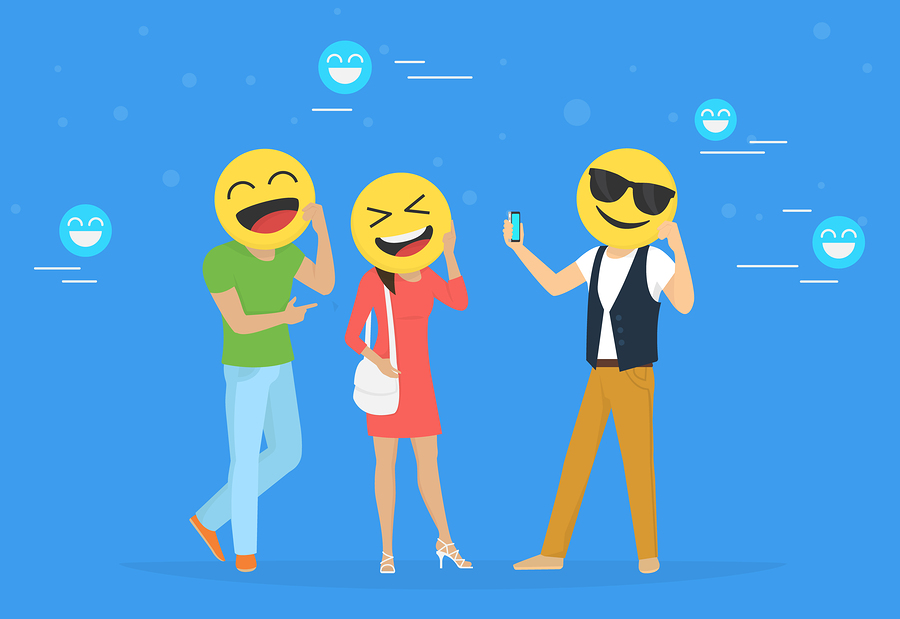Updated on January 9, 2024

Can emojis help you learn a language?

Sad faces. Smiley faces. Angry faces. Country flags, monkeys, flowers, accessories and…vegetables. When words aren’t enough, we will always have emojis – the little colourful icons we use on our phones, social media, private messages and e-mails to express emotions, ideas and moods. Could these funny little pictures help us learn a new language?
And where do they come from anyway?
Emojis were created in Japan in 1999, so it isn’t a surprise that the word itself has Japanese origins. The letter “e” stands for “picture”, while “moji” stands for “character”. An emoji is a “picture character”!
Emojis represent expressiveness, emotion and even body language. Things we cannot show through words when texting or publishing on social media, we tend to express through emojis. Awkwardness, nervousness, disappointment, excitement and love are all moods that are difficult to put into words. And if, in the past, using emojis for actual sad or unpleasant situations was uncalled for, it is common nowadays to express real sadness and anger with emojis. In fact, there is so much variety of them that the type of pictures we use and how we use them can say a lot about our identity!
Want to learn a language? Don’t forget culture and context!
It might seem ridiculous to suggest emojis could have any importance in language learning. After all, aren’t they just little icons spread all over Whatsapp? Well, you might be surprised to know some teachers and parents are using emoji to teach their children a new language. That’s because emojis are part of a wider culture of constant interaction, customised communication and expressiveness, in which emotions are often exaggerated and become visual. For that reason, they can be a helpful tool to help you learn!

The keyword here is association – emojis can’t really teach you a language in isolation, but they can greatly improve your learning when associated with vocabulary. In fact, using flashcards with icons or images on them rather than translations from language to language have been proven to help people memorise new vocabulary for a longer period of time. Here are some situations where you might find it useful to learn languages through emojis:
When studying vocabulary about emotions. Take advantage of the variety of emojis that exist to create flashcards about certain emotions and study the word in your target language, rather than using translations. For example, you might use a smiley face for the word “happy”.
When studying certain categories such as vegetables, animals, tools or even star signs. The increasing variety of emojis allows you to widen your vocabulary categories and go for icons rather than translations.
When you can’t stop thinking in your native language. Thinking in your mother tongue while learning a new language is not a sin. In fact, it can even be useful. However, when you realise you are wasting way too much time thinking about words and expressions in your mother tongue, using emojis for different vocabulary can be useful instead of using translations.
When you still can’t express yourself that well. When you have speaking lessons or when you’re texting a pen pal in your new language, emojis could be a useful tool to help express your idea or ask how to say a word without actually using your native language.
Do you have a language learning bucket list?
When used in isolation. Emojis alone will not be very useful for learning a language. Typically, they should be associated with a word or concept.
When you’re learning a language for formal purposes. Business language – emojis are unlikely to ever take place in very formal, serious conversations or interactions (embassies, academia, job interviews and correspondence, etc), so it could be silly to get used to writing with emojis only to find yourself struggling in a formal context.
When icons and body language change across cultures. Different cultures use different body language. Smiles, greetings or certain gestures (such as the “thumb-up” gesture, which can be seen as an insult in several places) aren’t used equally by different people, in which case there could be miscommunication when trying to express yourself with emojis to a language partner of another culture.
Why learning languages has real mental health benefits
Since emojis have the power to change a message, convey information and express feelings in a quick, practical way, some fear the use of these icons will reduce literacy or make people lazier. Will messages become shorter and slowly replaced by images? Will language as we know it vanish? We believe there isn’t cause for alarm. See, language change doesn’t necessarily mean language deterioration. Wanting language to be simple and more practical has always been a concern for human beings, and emojis seem to be more of a complement than an entire language that could stand for its own. For now, we keep using them to enhance our words, communicate better and learn languages in a fun way!